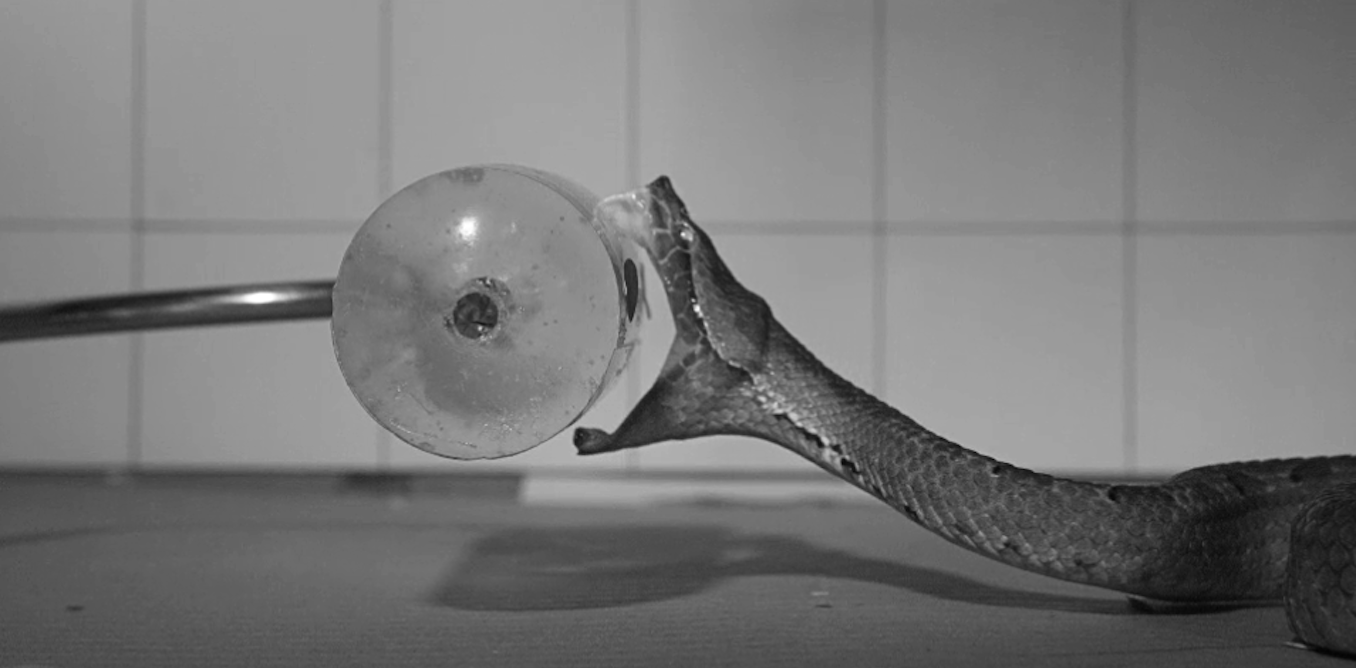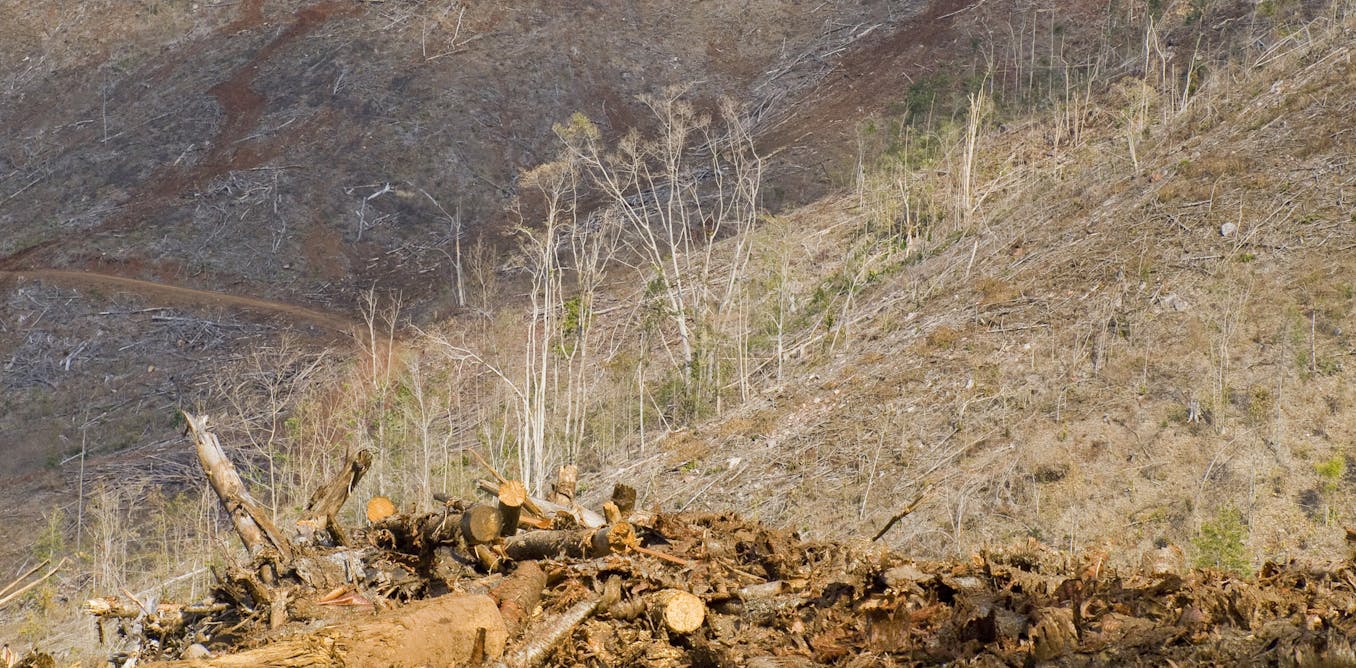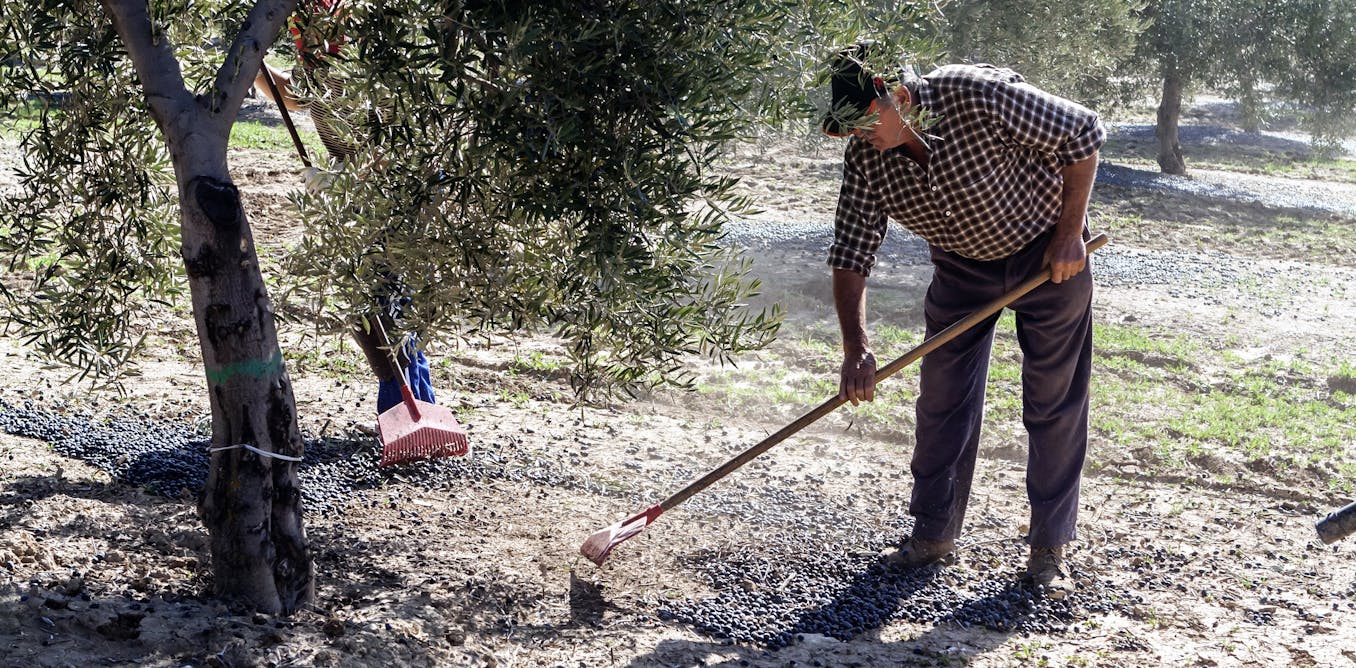We are facing the greatest upheaval since industrialization. To stop climate change, the energy system must be transformed worldwide. Very little time remains to accomplish this. But there are places where this renewable future has already arrived.
The documentary explores the question of what needs to happen in terms of politics, policies, and society to implement what is technically possible, when it comes to renewable energy. To do this, the film visits two completely different places. One is in the US and the other, in Bavaria. These localities have two things in common: Both have completely converted their energy supply to renewables and as a result, both now have more money in their coffers today than before.
The documentary provides a global overview of the solutions that already exist for a worldwide energy transition. And it asks what challenges still need to be overcome — not only in the laboratories and power plants, but also among the movers and shakers who must drive the change today.
Part 1: https://youtu.be/zy7vUppYPC8
#documentary #dwdocumentary
______
DW Documentary (English): https://www.youtube.com/dwdocumentary
DW Documental (Spanish): https://www.youtube.com/dwdocumental
DW Documentary وثائقية دي دبليو (Arabic): https://www.youtube.com/dwdocarabia
DW Doku (German): https://www.youtube.com/dwdoku
DW Documentary हिन्दी (Hindi): https://www.youtube.com/dwdochindi
More than 50% of the world’s population live in urban areas. By 2050, it could be nearly seventy percent. Big cities have big needs when it comes to water, food, and energy. This heavy demand on resources poses daunting challenges to researchers in a world grappling with climate change.
Those cities and towns will need large amounts of energy. Revolutionizing the complex systems of our energy supply is one of the biggest challenges for a global transition to green energy. And for people, probably the most tangible. So, for us, as cities, and responsible for the policy in the cities,
I think it’s so important that we take a leading role. Because it is possible for cities to change. So we are very conscious that we need to move into an economy that is renewable and circular and nature positive, all those at the same time. Actually, we don’t have a choice.
I think that we have little time left to save the planet. So, we have to do whatever we can as fast as possible. To see how a sustainable energy supply can work in practice, we head to the United States. There, a California city is aiming to become
The first carbon-neutral community in the country. Lancaster is home to about 175,000 residents. In 2009, officials started on a journey to go green fundamentally transforming the city’s economy and infrastructure. Not only was it a technological overhaul more importantly, it was a shift in mentality.
It’s the purpose of government to assist people, not to delay people. It used to take a minimum of six months if this person wanted to put solar panels on their roof. They have to get a permit. Somebody would always have a design change,
But it would take six months just for them to be allowed to do it. And so when I found that out, I sent out a memo. It now takes 45 minutes, and it better be 45 minutes. In the city of Lancaster, the hardest part was changing the culture within the city staff
That we look for reasons to say yes, we don’t look for reasons to say no. You know, when we started out down this path, we were laughed at, we were scorned, we were, you know, Facebook lit up every day, but we set out to develop a model for a city that,
Once the world woke up, it would be easier for them to do it. As we went down this path, we made more money than you can possibly imagine. Alternative energy is profitable and it’s profitable in a huge way. Lancaster’s mayor, Rex Parris, began by having photovoltaic panels installed on all municipal buildings.
The generated electricity was used for public lighting. In the process, Parris discovered it saved the city a lot of money. The saved dollars were put towards installing even more photovoltaic panels on the roofs of private residences. These systems also became mandatory for new buildings. Bit by bit, Lancaster created an alternative energy network.
Excess electricity started being used to generate hydrogen to fuel public transportation. The low-cost electricity and cheap hydrogen attracted new, large companies. And Lancaster solidified its reputation as a green boomtown in the United States. I traveled a lot. I went to the World Economic Forum in Tianjin, I went to Saudi Arabia,
I went to the Middle East every energy conference, and I learned a lot. Thanks to the sunny weather and the already existing solar and wind parks in the area, green energy and hydrogen production continued to expand. When Lancaster began the process of transforming its own energy system
In 2009, the unemployment rate was at 17%. In 2023, it dropped to around 6%. Lancaster became a self-sufficient green energy powerhouse and highly profitable too. Once people start being innovative and creative, it doesn’t stop with the immediate goal in front of you. It extends everywhere.
This really is the most exciting city in the world, I think, for that reason. We have a common purpose, and it’s a simple purpose. It’s that our children survive. You know, that’s not hard, you know. And when you have that as a common purpose,
You can put aside all the differences and you can make things happen. You can build things that have never been built before. You know, this project here, is actually quite remarkable. In recent years, both the city of Lancaster and Mayor Parris have been recognized with many awards for the achievement.
From the US state of California to Wunsiedel, in the German state of Bavaria a rural region where the forest industry is key. When Marco Krasser took the helm of the regional energy supplier, everything here changed. What would an energy supply look like if we only could use renewable energies and sustainable raw materials?
Well, we harness sunlight and wind energy and store them. Wunsiedel shifted to a circular system that effectively linked its regionally strong timber industry with the local energy system. The idea was to re-use as much energy as possible, multiple times. And wherever excess energy accumulated
Say, in the form of wood waste or waste-heat from machines it shouldn’t be lost but rather harnessed. We have wood, we have biomass, we have sun and wind. We may not have hydropower, but we use everything locally that we need. Surplus energy generated from solar and wind power
Is used to press forestry waste into wood pellets. The pellets can then be burned to generate heat, or to power a turbine for electricity. It forms a cascaded system which always consists of the same thing: solar and wind, battery storage, and combined heat and power.
It’s the perfect system which couples both sectors and industries. The construction industry is linked to the timber industry; the timber industry is linked with agriculture or forestry. This creates local circular energy economies that can be scaled up to all levels, which in turn satisfy the energy demand
In the form of electricity and heat. And electricity in terms of mobility. Wunsiedel in Bavaria and Lancaster in California: Both have tapped into their locally available resources as best they can. And both have created infrastructures in which green energy can be used as efficiently as possible in an ongoing cycle.
Of course, such systems are ideally integrated into construction projects from the very start. In Copenhagen, a newly-built district called Nordhavn served as the testing ground for the “EnergyLab” project a living laboratory for research into innovative and more efficient energy cycles. Well, the essence is that we test the solutions in real life.
In EnergyLab Nordhavn, we have also been looking into business models because that’s also part of the solution. Innovation and business models is part of the solution. In this sector coupling context, it’s very important that we utilize the energy that is available and this is basically something
That we are demonstrating here in the Nordhavn project. We can say that the energy system has to develop, we have to do it in a more smart way, and that means that we need to see what other sources are available and how can we in the best possible way actually utilize them.
The buildings here are well-insulated and retain heat. That’s a money-saver — and is especially important at peak hours in the early mornings. Plus, commercial businesses in the neighborhood can compress their waste-heat and supply it to the district heating system, which provides heat to the surrounding buildings. The compressors for cooling down the goods,
They are run by electricity and by using a little bit more electricity in the compressors, we get way more heat available. So in situations where we have surplus electricity from wind turbines or photovoltaic, we can actually optimize operation of the compressors and convert that into a lot extra energy
That can be used in the buildings. And in that way, is this system actually a smart component in the sector coupled energy system. Here again, an ingenious cycle. The energy put into the system is not single-purpose — rather, it’s used several times. And the whole neighborhood benefits.
The goal of a modern circular economy is to save energy and increase efficiency. These cycles are optimized to make energy competitive in price while serving as an extension or even an alternative to the large, centralized grids. Norway and its capital Oslo are among the pioneers in the green energy transition.
Oslo is aiming to reduce CO2 emissions to zero by 2030. Mayor Marianne Borgen helped to draft and pass a series of concrete measures. We have all the way tried to tell our inhabitants that this is not about restrictions. So it’s not about restrictions. It’s about opportunities.
When we are building new kindergartens and schools, they are built with solar cell panels. And they also produce more energy than they need to use themselves. So we can put it over to other buildings nearby. Oslo is considered the world capital of e-mobility. It’s also made significant headway
In making its construction sector carbon-neutral with advancements in heating and building materials. We have said in Oslo that we want to be the first zero emission city in the world by 2030, which is a very ambitious goal, but it is possible.
I think that is so important both to try to reduce the consumption, of course, but also reduce the waste and also to reuse and also recycle. I think that these are all important elements in the total policy. To achieve this ambitious goal, both residents and businesses must play an active part.
Hege Schøyen Dillner spent several years of her career working at a large Scandinavian construction company based in Oslo. The company has more than 8,000 employees and carries out projects worldwide. As a board member, she pushed the company to publicly commit to implementing the goals of the 2015 Paris Agreement on climate change.
She also supported Mayor Borgen’s measures. I think the biggest moment in my career was when the whole management team decided that we would work towards the Paris Agreement. We didn’t know exactly how we should do it, but we set a clear direction. And I think that was so crucial, to set the direction.
And then some people said: But what if we can’t make it? And I said: Well, I’m not so afraid about that. I’m afraid that we don’t dare to set the direction. With all her experience, Hege Schøyen Dillner sat for years on the board of the Norwegian Green Building Council,
Which is part of the World Green Building Council. I think it will be very important how we build our cities the next 30 years. In 2022, we reached eight billion people on Earth, and by 2050 there will be 10 billions.
That means a city the size of Vienna will be built every week until 2050. That’s a lot of aluminum and steel and glass and wood and concrete and plastic and bricks. So we have to go circular. We have to build with less for longer. Sonja Horn manages a real estate company in Norway.
When constructing new buildings, the company aims to reuse as many elements as possible from old office buildings that are being torn down. When building a modern office complex in Oslo, the company fused old with new. It was a pilot project, meaning success was not guaranteed.
But almost immediately, startups and tenants started moving in precisely because they were drawn to the concept. Hege Schøyen Dillner also had an office there for some time. It’s a reused reflector panel. Also the fence here used to be on the floor in the swimming pool
In the technical room and is being used all the way up as a railing in the atrium. So those are some of the more interior aspects of re-use, we also refer to it as upcycling. So it goes from one thing to be upcycled to something else. We’ve been working systematically on finding out
How we can make buildings part of the solution. I mean, buildings account for around 40% of carbon emissions globally, 40% of energy use, so a huge part of the problem. Meaning that we also have the opportunity to be a huge part of the solution. In 2019, an office building
Commissioned by Sonja Horn’s company was inaugurated in the Norwegian city of Trondheim. It was named: “Powerhouse.” The roof is covered with solar panels, angled optimally to capture the sun’s rays in northern Europe. As a result, the Powerhouse, with its 3,000 square meters of panels,
Produces an annual average of 500,000 kilowatt hours of electricity. That is more than double the amount it consumes itself. The surplus electricity is used on a local micro-grid to supply neighboring buildings, and electric buses and cars. And this is a pioneer project, it’s one of a kind, the first of its kind.
So it’s attractive for young people to sit and work here. And it feels good. Whenever we build new, we have focused on mainly three aspects: One is to use less resources and materials, so whatever you can reuse is excellent. If you can’t reuse, maybe you can use recycled materials
Before you start sourcing new materials. More and more of the construction sites that we have in Oslo are now zero emission construction site because the technology is in place. We need to challenge the establishments, the industry and also show the way. The employers and employees
In business are now largely as a general trend, very much on board, that cutting emissions is not only the right thing to do for the world’s climate and the future of our kids but is actually also smart in the economy.
Like Oslo, the rest of Norway is aiming to be carbon neutral by 2030. The country has a large oil and gas sector, but it also has a wealth of hydropower. Norwegian Minister Espen Barth Eide is confident that the necessary transition to a carbon-neutral economy comes with more opportunities than risks for domestic industries.
We’re also seeing that the service industry that was developed because of the 50 years of petroleum is now very eager to themselves go into these new areas. Because if you can run oil or gas platforms in the North Sea in 10-meter high waves and extreme conditions, you can also do floating wind.
If you’re good at building fossil ships with advanced technology, you’re also good at building hydrogen or ammonia driven ships with advanced technology. This circular energy economy relies as much on technological innovation from major industries as it does on a stable grid that can provide constant and reliable green power.
In northern Europe, that can best be achieved with wind power from offshore parks and with hydropower. If the countries bordering the North Sea can help balance one another’s demand for green power, it could result in an international grid, which could become a model worldwide.
The longest of these subsea links to date was constructed in 2021 to connect Norway with England’s eastern coast. At some hydroelectric power stations in Norway, water drops hundreds of meters to propel turbines that generate gigawatts of electricity. At Kvilldal, hydropower is converted for onward transmission and transmitted to Blyth in England,
Where gigawatts of electricity are generated from offshore wind. What we’re installing in here at the moment which is a converter station that physically does the conversion of the current, so it converts direct current down to alternating current or vice versa. Ultimately, we have interconnectors to allow where we can take in,
You know, green energy from lakes of Norway, hydro energy, into the country itself, so it’s enabling that transition of green energy not just for the UK but our neighboring countries, whether that’s Norway, whether that’s France, whether that’s Denmark or is somewhere else.
Britain has become a leader in Europe in developing offshore wind power in the North Sea. It’s now become an exporter of green power. It’s a super-fast green highway that allows the transfer of energy from either country we’re connecting to. It also brings security of supply. Once a prosperous mining town,
Blyth suffered a sharp economic blow from the decline of coal mining. Port of Blyth Manager Martin Lawlor hopes the power link will help return the town to its former glory. So the Port of Blyth is already a major offshore energy hub for the UK and that’s actually helping to attract further investments,
So companies want to be part of this cluster, they want to feed off some of the specialty hydraulics and electrics, some of the vessel operators, and those building cable factories, and that will help to drive further investments all around the estuary. Are the first signs of an economic upswing due
To the energy transition on the horizon? We are seeing this growth accelerating around the Blyth estuary. So the Port of Blyth is very much part of the town of Blyth. And the community is very much with the port in what we’re doing here.
They see the jobs coming in, they see the benefits to the economy and looking to the future, we’re going to hope that the majority of those jobs will go to local people, so they are very much with us. The world’s largest network to reliably generate energy
Has been under construction in the North Sea since 2020. In order for a new energy economy to succeed, it’s crucial to build large green power grids that are stable. By becoming partners in a new North Sea grid through direct coast-to-coast lines, border countries are inching closer to the goal of attaining energy security.
Europe has to be able to collaborate even better. I think every European state leader and the European Union leaders, it has dawned to them that we need to collaborate much stronger than we ever thought we were that was possible. This North Sea grid will deploy the latest technology
To exchange generated energy back and forth on demand. Large industrial centers will be built at the hubs, like this planned “energy island” off the coast of Jutland. More should follow and be interconnected. In the future, they could form a kind of inner network on the high seas.
Essentially, it’s an artificial island that can be expanded over time. But what is really great about an energy island is that it can actually power different countries around the North Sea at the same time. The first of these energy islands is to be built about 80 kilometers
Off the coast of Jutland and, according to the latest estimates, cost more than 30 billion euros. It is the first of several hubs for the new energy sector. The island alone should one day provide electricity for up to 10 million households. This will require large substations where alternating current
Can be converted to direct current and back again. That’s vital to transmit electricity over long distances. It started very much as a technology that would help integrating large bulk power and transmitting long distances with a much better efficiency because of much lower losses. The more systems we integrate,
The more complex the entire energy system becomes. If I need to integrate the next 20, 30% of electrical vehicles into the electricity system, if I need to integrate 40, 50, 60 gigawatt worth of offshore wind, there is a need to anticipate the planning and the investments
In order to deploy the grid technology on time. Sixty gigawatts is roughly equivalent to the capacity of forty nuclear power plants. On the eastern coast of Britain, construction on a new power cable was recently completed. It connects the grids of Britain and Denmark and will supply them
With electricity from both countries’ offshore wind parks. The new interconnector between the two countries is called the Viking Link. With a length of 765 kilometers, it’s the longest subsea power cable in the world. To meet an ever-growing need for energy in the future, large storage facilities will be required in addition
To transmission infrastructure. Hydrogen has immense potential as a storage medium for green electricity. At a Siemens Energy site in Berlin, a simulator shows the total demand for energy in a complex industrial society. Hydrogen could become the new optimal energy carrier. Which means the technology to produce hydrogen already holds great strategic significance,
Even if the industrial infrastructure is only just being built now. One way to make Hydrogen is via electrolysis, a process which uses an electric current to split water into hydrogen and oxygen. The electricity to carry out this process must come from renewable sources so that its production is sustainable.
The advantage of electrolyzers is that they can be integrated into existing economic cycles relatively easily. Anne-Laure de Chammard is a member of the Executive Board of Siemens Energy. The whole idea is to have a modular system where you can actually add them to each other,
So it’s the same building block but you can add them to each other to be able to reach the right scale, the gigawatt scale that is needed and really stick and be very able to adjust to the demand of our customers, depending on if it’s a small industrial site
Or a very large utility scale hydrogen production. In the future, an industrial site could use electrolysis to secure its electricity supply with hydrogen storage. How much is needed during daily peak hours? How much hydrogen would it take to replace a conventional power plant for example? These estimates can be used
To determine the best energy alternatives. Hydrogen is available in virtually unlimited quantities and could become the key to future supply. I would say there’s maybe three levers for the energy transition: the energy efficiency part, which is reducing the energy consumption by really going there and finding everywhere where we can have recycling
Of the energy that is produced. Then, electrification, everywhere where it is possible because this is going to be the cheapest way to decarbonize. And then, hydrogen and green molecules where this electrification would not be enough and where we need to capture
That to be able to store it and reuse it elsewhere or in processes. But hydrogen can do more than that. It can be further refined with CO2 into new fuels. Until now, these fuels have been supplied primarily by fossil fuels in heavy industry. The hope is that hydrogen can be the basis
For a whole range of fuels in the future. Hydrogen per se will be used as hydrogen, but a lot will also be transformed into what we call e-fuels so where we capture carbon, that we mix with this hydrogen, to then be able to do in a synthetic manner
Any of the fuels that you know today. Professor Bernd Rech is the Scientific Director at the Helmholtz Centre in Berlin. He oversees projects that use BESSY, a particle accelerator. BESSY is used to conduct targeted research into energy conversion and storage mediums. That includes making solar cells more efficient
And refining hydrogen into new fuels. Since when have I been convinced that something about our energy supply and energy system needed to change? It was simply the idea that the physical potential of renewable energy is great enough to supply our planet and humanity and that it’s relatively easy to achieve.
That’s what’s convinced me and has gripped me ever since. So to translate that into modern materials and technologies, we can convert the energy of the sunlight into electrical energy. And that energy we can convert into green electricity. And then we can, for example, use electrolysis to split water into hydrogen and oxygen.
And through this process, we have chemical energy carriers that we can use. And if we think big picture, we could be in the position to, for example, bind hydrogen to CO2 from the atmosphere and then generate synthetic fuels. Sonya Calnan leads a research project at the Helmholtz Centre.
The goal is to use solar energy and hydrogen to produce cleaner cooking fuels. These could be sold in places where there’s no electricity available for cooking which is the case in many areas around the world. The project is a collaboration between the team in Berlin
And the University of Cape Town in South Africa. I always start from the photovoltaic cells because right now, since when I started, right now they’ve become something common place, so I tell them: Do you see those solar cells on their roof? You can use them not only to make electricity
But also to make hydrogen and other things, even to clean water, if you connect them to the right type of chemical reactor and they provide the power and then you can almost do anything without needing a diesel generator for example. In many poorer parts of the world, wood and fossil fuel products
Such as propane are used for both cooking and heating. Converting hydrogen and CO2 into a clean fuel would be a sustainable alternative. When you go to buy your cooking gas, you go once, once maybe every month, instead of collecting firewood is quite bulky so if you collect some firewood for one day,
It’s not enough, then you have to go the next day and so time spent going to collect the firewood all the time is kind of saved and this time can be used for other, more developmental activities. Projects like these are still in the experimental stage.
But the hope is that they’ll become building blocks in an ever-expanding circular energy economy. All around the world, more and more research is being conducted into green technologies. Singapore especially is considered a laboratory for the future. Professor Madhavi Srinivasan is tackling one of the main problems of the new energy economy.
Along with hydrogen, batteries are the most important storage medium. But they’re made of costly materials which are becoming more and more scarce as global demand grows. Madhavi is researching how to recycle lithium-ion batteries and other e-waste so that they can be reintegrated into the production cycle.
There has to be a mind shift towards a circular idea of economy. Otherwise, we will fall into we, as in, the world will fall into a trap of, you know, we might not have resources anymore. Nanyang Technological University, alongside other prestigious institutions like Berkeley and Stanford,
Is among the world’s most well-regarded research hubs. It focuses on developing tech that could be rapidly deployed in future industry. This building on NTU’s campus is called the Learning Hub and was designed specially for Singapore’s tropical climate. Its atrium is naturally ventilated, which saves energy.
I decided very early that batteries would be my field of research. That was my PhD topic. I’ve been doing batteries my entire career, energy storage, circular economy my entire career. From early on, I always wanted to do something that would make change in people’s lives. These are all shredded to something like this.
You get the shredded batteries and the black stuff that you see that is sticking here is where all the elements are present: lithium, nickel, cobalt, manganese. How do we extract them? We first physically separate the black powders that are there and get what is called as a black mass.
This black mass is what has all the elements inside. The way we recover today, is by actually using orange peels, we just add orange peels to the black powder or instead of that we add bacterial cultures to this black powder. So bacterial culture plus this black mass,
We are able to extract all the elements, about 99%. Madhavi’s research is aimed at making a closed loop where the use of entirely new materials can be reduced to an absolute minimum. Her innovations have resulted in thirty patents to date, and in 2019, she was recognized as one of “Asia’s Top Sustainability Superwomen.”
There’s a lot of synergistic effort between materials research and circular economy of materials. Today, both of them are done in silos, but I think there’s a lot of linkages and my research is really trying to link. Back in Copenhagen, many of these practical experiments
Are being organized in a database to examine the most promising results. Tejs Vegge directs this center at the Technical University of Denmark. Improbable approaches are oftentimes followed by fresh and innovative ideas. Pinpointing them and sharing recommendations with laboratories around the world is one core mission of the institute.
I mean, the models that we develop here are what we call physics aware, but they are also uncertainty aware. So they need to know when they don’t know. And sometimes the best way of gathering additional information is actually not from the robot. It is from the expert.
It could be from the people that work daily with the production of new battery materials, their specific insight to guide the development. So it’s a multinational, it’s a multi-facility undertaking and it’s also asynchronous. So it’s, you could say, continuously operating around the world, 24/7, gathering the data that’s needed,
Controlling experiments and equipment at other places. It’s really a global challenge and a global solution. It often takes two decades for basic research to reach industrial maturity. But amid the climate crisis, time is of the essence. Solutions need to be employed faster. It’s an incredibly complex challenge
So complex that applied research will need to adapt too. I would actually argue that the main challenge and the main potential solution lies in reinventing the way we invent new materials for the green transition. It’s actually rethinking the way we do materials discovery, we do system development,
And we need to reinvent the process itself and integrating all parts of the discovery production and end use cycle to do so. This is especially critical because the next innovations are already on the horizon: Professor Harry Atwater conducts research at the California Institute of Technology. He’s one of the world’s leading experts
In the field of solar energy conversion, turning sunlight into electricity and heat. A relatively new branch of research is working to imitate nature’s most fundamental energy-harvesting process: photosynthesis. Nature has this marvelous capacity for in the leaf of every plant of doing something that’s nearly miraculous, which is harvesting carbon dioxide
From the atmosphere together with water, in the presence of sunlight, and transforming those chemical reactants into complex sugars and starches that sustain life in a plant. Those complex sugars and starches essentially are fuels. So we had drawn a huge inspiration from nature to envision a process we call artificial photosynthesis
Which uses engineered materials to perform the same kind of reduction and oxidation reactions that enable the formation of fuels directly from sunlight. Artificial photosynthesis mimics this process that happens in nature. Instead of sunlight shining on a leaf as it does in nature, researchers use structures made of intricately-manufactured semiconductors.
In other words, an artificial leaf. And with it, solar energy can turn water into hydrogen and oxygen. The efficiency of artificial photosynthesis is currently at 19.3% and was jointly achieved by laboratories in Pasadena, Ilmenau, and the Fraunhofer Institute. If this process could be scaled up for industrial use,
Hydrogen would become cheaper than any other fuel. That’s why research into artificial photosynthesis is being conducted worldwide. We’re now talking about the application of such semiconductor structures in a so-called ‘artificial place’ meaning, an integrated device that does not need any wiring to the outside, similar to plants.
So that we can basically produce hydrogen and oxygen more or less from nothing, just through sunlight and water. Now for the first time, we’re in a position where we can essentially provide free energy using photovoltaics the same way nature has been doing for a very, very, very long time.
And this has never been possible before. It’s hard to overstate the significance of semiconductors. They’re small and inconspicuous, but they are the basis of all advanced technologies. And can be made of many different types of materials. Researchers at the Technical University of Ilmenau work with so called three-five semiconductors:
III-V semiconductor compounds are ones we can design perfectly. Using silicon as the base material that would of course be extremely profitable. That’s where high performance would meet cheap materials and low costs. Of course, not every single part of these new energy systems is ready for action. But rolling out innovation to communities
And industries will be key. There are still many Scientific breakthroughs and technological innovations that have not yet been widely implemented for public use. If you go through learning in silos, like we did in the past, we will get there. But we will not get there on time.
And we all know what it will cost us not to be there on time from a climate perspective. The hope for a circular system is the thing that propels us. Prosperity must be made more sustainably. We didn’t inherit this planet from our parents, rather we’re borrowing it from our children.
Researchers have made tremendous strides in recent years. Technology has come a long way. But successfully transforming our energy supply to make it sustainable hinges on our ability to scale these solutions. They must be integrated into large sectors of society before it’s too late.
Video “Global renewables: Pioneering the energy transition | DW Documentary” was uploaded on 12/01/2023 by DW Documentary Youtube channel.






































